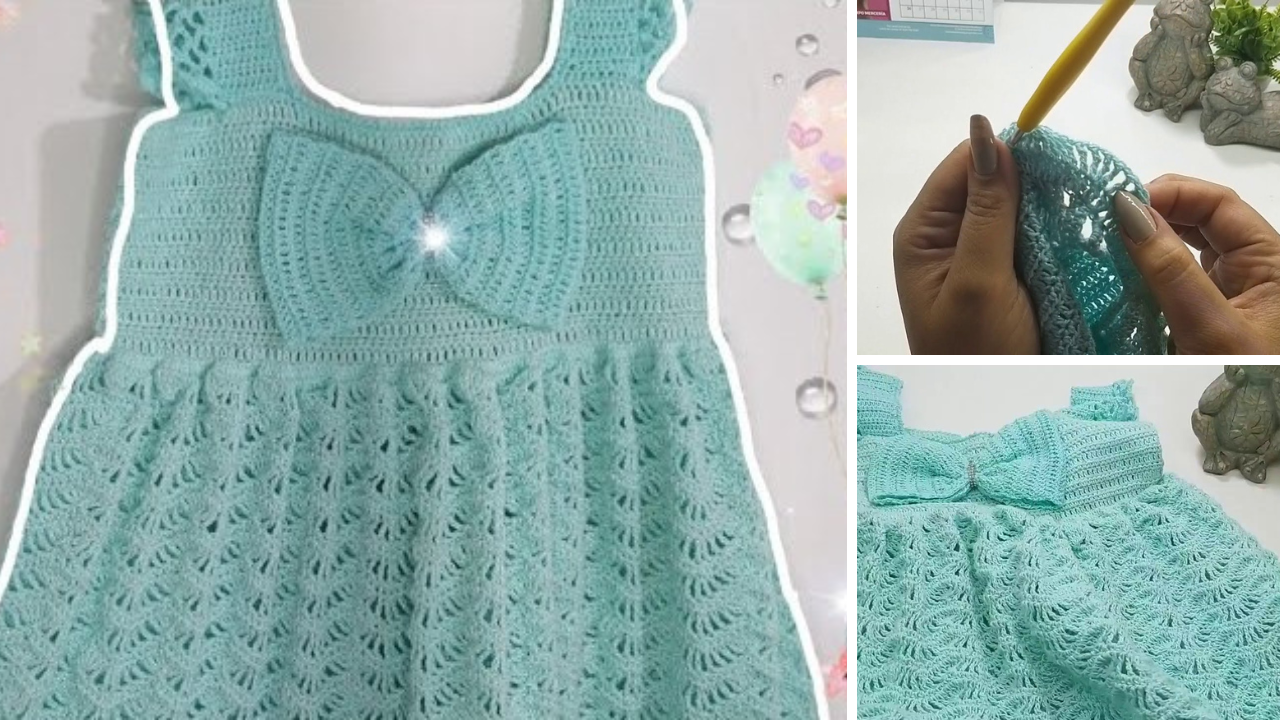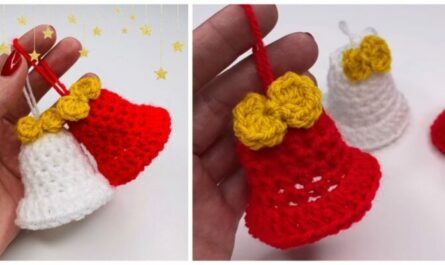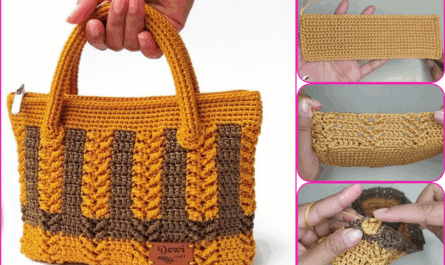There are colors that simply resonate, and turquoise is undoubtedly one of them. Evoking images of tranquil oceans, sun-drenched desert oases, and exquisite gemstones, turquoise is a hue that balances the calming serenity of blue with the renewing energy of green. When translated into a Turquoise Crochet Dress, this captivating color transforms into a wearable work of art – a garment that is both vibrant and serene, casual and elegant, and utterly unique.
A turquoise crochet dress is more than just an item of clothing; it’s a statement piece, a touchstone to nature’s beauty, and a testament to the artisan’s skill. This detailed article will guide you through the enchanting process of bringing such a radiant garment to life, from selecting the perfect shade of blue-green to mastering the techniques that ensure a flowing, beautiful finish.
The Alluring Essence of a Turquoise Crochet Dress
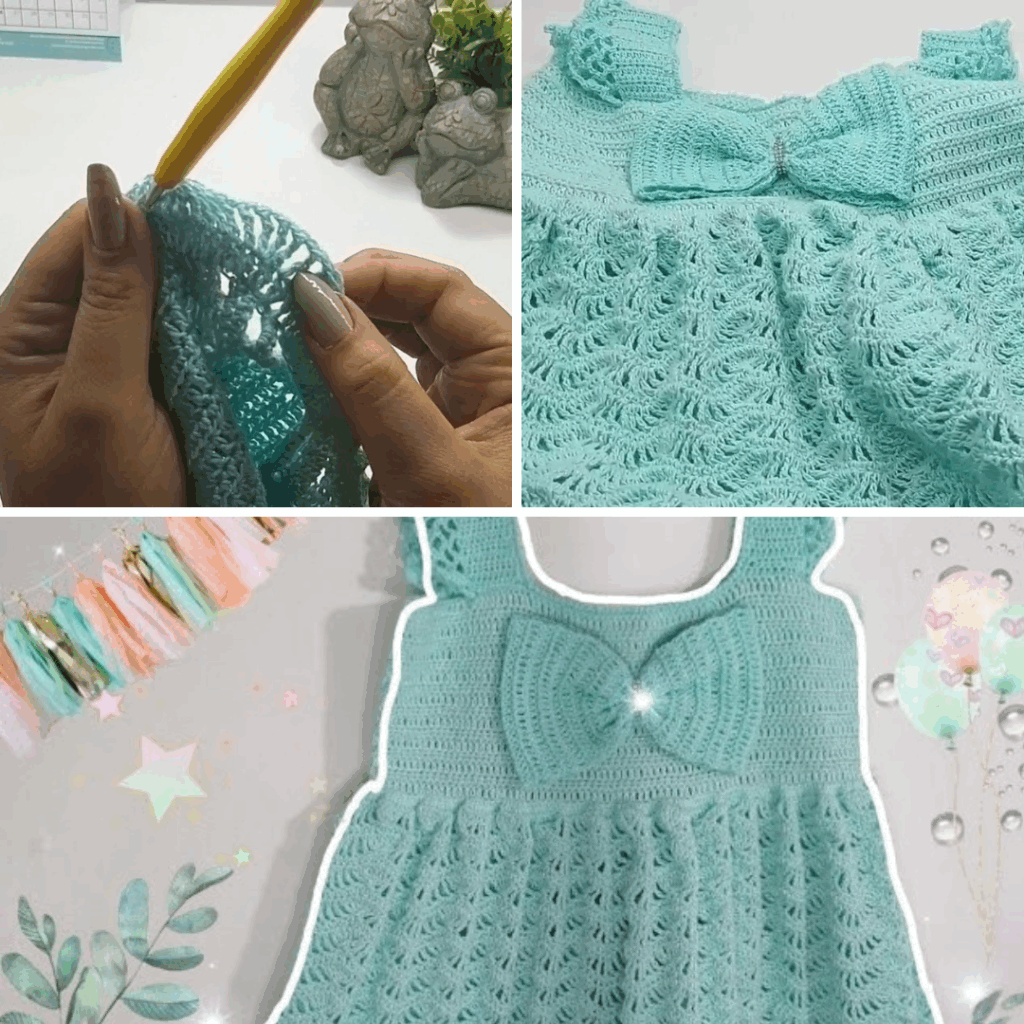
- Color Psychology & Symbolism: Turquoise is often associated with calmness, emotional balance, sophistication, and protection. It’s a color that can be both vibrant and soothing, refreshing and luxurious, connecting wearers to feelings of peace and well-being.
- Versatility in Shade: Turquoise isn’t a single color; it encompasses a wide spectrum from pale aqua and robin’s egg blue to deep teal, mint green, and vibrant cyan. This variety allows for endless personalization.
- Bohemian & Resort Chic: Its natural affinity for beachscapes, summer breezes, and earthy tones makes it perfect for bohemian, resort, or even festival fashion. It effortlessly transitions from a casual daytime look to a more sophisticated evening ensemble.
- Timeless Appeal: While currently on-trend, turquoise is a classic color that transcends fleeting fads, ensuring your crocheted dress remains a cherished piece for years to come.
- Handmade Artistry: A crocheted dress, especially in such a distinctive color, stands out as a unique, artisanal creation, reflecting the time, skill, and love poured into its making.
Designing Your Turquoise Dream: Key Considerations
Successfully crocheting a turquoise dress involves careful planning to marry the color with the desired style and fit:
- Choosing Your Turquoise:
- Do you prefer a light, ethereal aqua reminiscent of clear shallow waters?
- A bright, bold cyan that pops with energy?
- A deep, sophisticated teal with hints of green or blue?
- Or a muted, dusty turquoise for a more bohemian, earthy vibe?
- Consider how the specific shade will complement your skin tone and intended styling.
- Accompanying Colors (if any):
- Neutrals: White, cream, sand, grey, or black provide elegant contrast that allows the turquoise to shine.
- Metallics: Gold or silver accents (through beads or subtle lurex yarn) can add a luxurious, gemstone-like sparkle.
- Contrasting Brights: Coral, fuchsia, or sunny yellow can create a bold, playful summer look.
- Earthy Tones: Browns, terracotta, or deep olive greens can lean into the desert-inspired bohemian aesthetic.
- Yarn Choice (The Foundation of Drape & Comfort):
- Fiber: Prioritize yarns with excellent drape for a flowing dress.
- Mercerized Cotton: Offers beautiful sheen, stitch definition, and drape, perfect for summer.
- Bamboo/Rayon: Incredibly soft, silky, and drapes fluidly, ideal for elegant pieces.
- Linen/Linen Blends: Provide a crisp drape that softens beautifully with wear and washing, giving an organic feel.
- Silk Blends: For ultimate luxury and a truly fluid, exquisite drape.
- Soft Acrylics: Many modern acrylics are engineered for softness and drape, offering a more affordable and easy-care option, often with excellent color retention.
- Weight: Fingering (Category 1), Sport (Category 2), or DK (Double Knitting, Category 3) are popular for creating delicate, flowing fabrics with intricate stitch patterns. Worsted (Category 4) can be used for a slightly denser, warmer dress, but ensure the stitch pattern and fiber still allow for drape.
- Fiber: Prioritize yarns with excellent drape for a flowing dress.
- Stitch Pattern:
- Showcasing Color: Simple stitches like Single Crochet (SC), Half Double Crochet (HDC), or Double Crochet (DC) allow the luminosity of the turquoise to take center stage.
- Adding Texture/Lace:
- Shell or Fan Stitches: Create beautiful texture and an open, airy feel.
- V-Stitch: Simple yet elegant, offering a lovely drape and subtle pattern.
- Ripple or Wave Stitch: Perfect for an oceanic theme, creating a rhythmic visual flow.
- Filet Crochet: For more intricate lace patterns, allowing for subtle skin exposure.
- Clusters/Puffs: To add dimension and a more tactile fabric.
- Silhouette & Fit:
- Flowing/A-line/Shift: These silhouettes best showcase the drape of crochet fabric in a dress, offering comfort and elegance.
- Fitted Bodice with Flowing Skirt: Combines structure on top with freedom of movement below.
- Length: Maxi, midi, or knee-length, depending on desired formality and occasion.
- Sleeves: Sleeveless, cap sleeves, flutter sleeves, or wide bell sleeves can all complement the overall aesthetic.
- Embellishments (Optional):
- Beads: Clear, silver, gold, or iridescent beads can be crocheted in or sewn on for a subtle shimmer.
- Fringe: At the hem or sleeves for a bohemian touch.
- Simple Edgings: A refined border around the neckline and armholes.
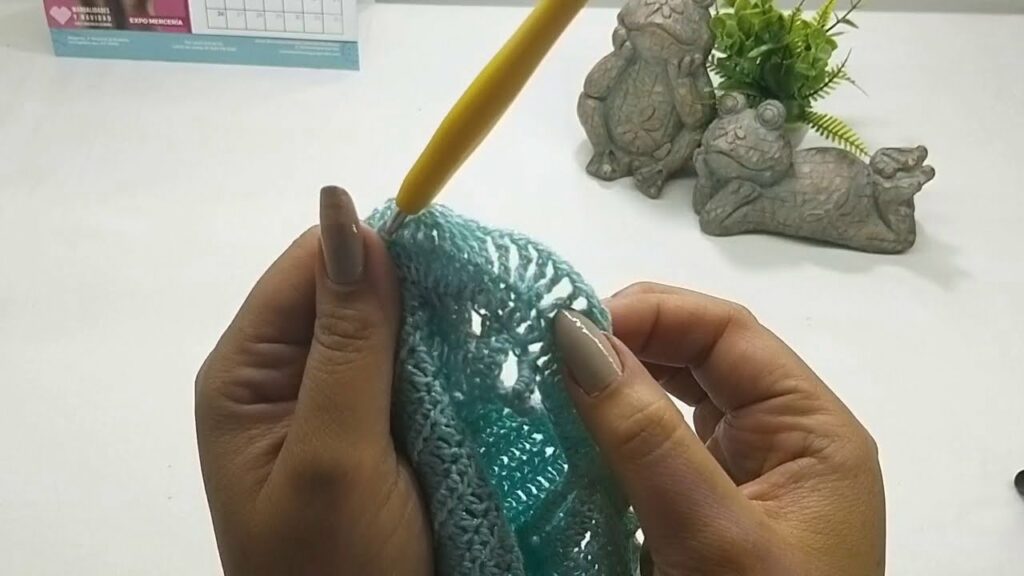
Materials: Your Palette for Oceanic Creation
- Yarn: Your chosen turquoise shade(s) and any accompanying colors. A full-length dress will require a significant amount of yarn, so always check pattern yardage and buy extra!
- Crochet Hooks: The size(s) recommended by your pattern to achieve the correct gauge and fabric density for the desired drape and stitch definition.
- Stitch Markers: Indispensable for marking rounds, shaping points, and pattern repeats.
- Tapestry Needle (or Blunt Yarn Needle): Crucial for weaving in ends neatly and for meticulous seaming.
- Scissors.
- Measuring Tape: Essential for detailed body measurements, gauge swatching, and checking garment dimensions as you go.
- Blocking Mats & T-pins: Absolutely paramount for shaping, setting the final dimensions, and opening up intricate stitch patterns to enhance drape.
- Optional: Beads, cording for ties, or lining material (e.g., a simple slip dress or fabric for a sewn-in lining) if your pattern is very open or for modesty.
Essential Crochet Techniques for a Turquoise Dress
Crocheting a full dress is a significant undertaking, requiring a comprehensive set of skills:
- Foundation Chains / Foundation Single Crochet (FSCs): For a flexible and neat starting edge, particularly important for necklines or hems.
- Basic Stitches: Chain (ch), Slip Stitch (sl st), Single Crochet (sc), Half Double Crochet (hdc), Double Crochet (dc) – these are the building blocks.
- Working in Rounds vs. Rows: Depending on whether your dress is seamless or constructed from panels.
- Garment Shaping (Increases & Decreases):
- Bust Darts (for fitted bodices): To accommodate curves.
- Waist Shaping: To create a flattering silhouette, even in looser styles.
- Armhole & Neckline Shaping: Creating smooth, even openings.
- Textured/Lace Stitches: Mastering your chosen stitch pattern (shells, V-stitches, ripples, clusters) for consistent results.
- Seamless Joins / Invisible Seams: Strive for seamless construction where possible. If working panels, master techniques like the mattress stitch for a smooth, unnoticeable finish.
- Edging: A final clean edge around the neckline, armholes, and hem elevates the finished garment.
- Blocking (Paramount!): This is the most critical finishing step for any crochet garment, especially one with significant drape or openwork. It opens up lace patterns, evens out stitches, and sets the final shape and fluid movement of the dress.
Planning Your Project: Laying the Foundation for a Serene Fit
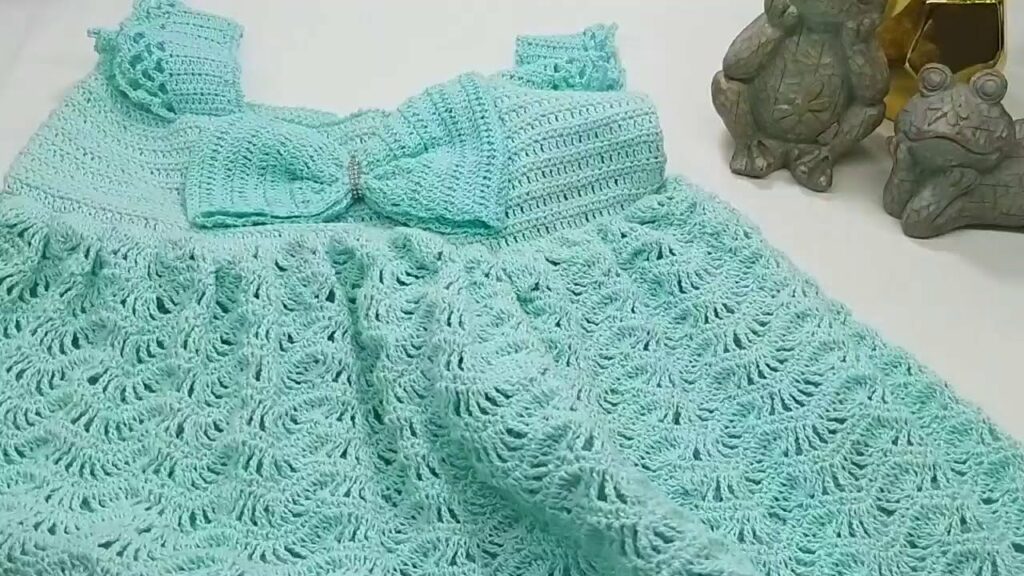
- Detailed Sizing & Measurements:
- Take precise body measurements: full bust, underbust, waist, high hip, full hip, shoulder width, desired dress length (shoulder to hem), arm length, and armhole depth.
- Determine the amount of “ease” (extra room) you want beyond body measurements for comfort and desired fit. A flowing dress will have significant positive ease.
- Gauge Swatch (The Golden Rule!):
- Crochet a substantial swatch (at least 6×6 inches / 15×15 cm) in your main stitch pattern with your chosen yarn and hook.
- Crucial Step: Wash and block your swatch exactly as you plan to wash and block the finished dress. This is absolutely vital, especially with yarns designed for drape, as they can change significantly after laundering and blocking.
- Measure your stitches and rows per inch/cm accurately. Adjust your hook size if your gauge doesn’t match the pattern’s.
- Yarn Quantity: A full-length dress consumes a significant amount of yarn. Always consult your chosen pattern’s yardage requirements and consider buying an extra skein (or two) to ensure you don’t run out mid-project, especially with specific dye lots.
- Pattern Selection/Adaptation: For a garment as complex as a dress, a well-written pattern is highly recommended. Look for patterns with clear instructions, sizing options, and helpful diagrams. If adapting, plan your increases and decreases meticulously.
Construction Journey: Weaving Ocean Hues into Fabric (Conceptual Guides)
The construction method will depend on your chosen pattern (top-down, bottom-up, or seamed panels):
- Bodice / Upper Section:
- Begin by establishing the neckline, working increases to shape the shoulders and bust.
- This section often sets the tone for the stitch pattern that will continue throughout the dress.
- Main Body / Skirt:
- Attach the skirt section to the bodice, either by joining in the round or continuing flat.
- Work for the full length, incorporating subtle shaping for the waist and hips if desired, before allowing the skirt to flow naturally.
- Sleeves / Armholes:
- If sleeveless, ensure the armholes are neatly finished.
- If adding sleeves, work them directly from the armholes (seamlessly) or crochet them flat and seam them into place.
- Finishing Borders / Edgings:
- Complete all cuffs, hems, and the neckline with your chosen edging.
Finishing Touches: The Polished Wave
- Weaving in All Ends: Meticulously weave in every single yarn tail. With a vibrant color like turquoise, stray ends can be particularly noticeable.
- Edging / Borders: Ensure all edges – neckline, armholes, sleeves, and hem – are finished with your chosen decorative or simple border.
- Blocking (The Ultimate Transformation!):
- Gently wet your finished dress (or steam it).
- Carefully lay it out flat on blocking mats, shaping it precisely to its intended dimensions. Pay extreme attention to opening up lace patterns (if applicable) and encouraging the beautiful, fluid drape of the fabric. Pin firmly with T-pins, ensuring the stitches are even and the fabric flows.
- Allow to dry completely (this can take significant time for a full dress). Blocking dramatically improves stitch definition, evens out tension, enhances drape, and sets the final, elegant shape of your turquoise dress.
- Lining (If Applicable): If your dress has openwork or you desire extra coverage, add your chosen lining (e.g., wear a slip underneath, or carefully sew in a prepared fabric lining).
Styling Your Turquoise Treasure
A turquoise crochet dress can be styled in myriad ways:
- Casual Chic: Pair with flat sandals, a wide-brimmed hat, and a wicker bag for a beachy, bohemian look.
- Elevated Evening: Add metallic heels, statement gold or silver jewelry, and an elegant clutch.
- Layered: For cooler evenings, drape a simple white or cream cardigan or denim jacket over it.
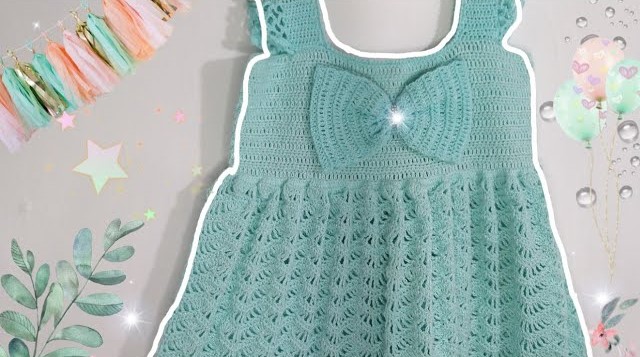
Tips for Turquoise Dress Success
- Yarn is Key: Choose a yarn known for its excellent drape. This is paramount for a flowing dress.
- Choose Your Turquoise Wisely: Consider the undertones and how it will interact with your skin tone and other colors.
- Swatch and Block! Never skip this step for a garment, especially a dress. It guarantees fit and proper drape.
- Seamless for Flow: If possible, choose a pattern worked in the round for minimal seams, which often enhances drape.
- Patience for a Garment: A full dress is a significant undertaking. Enjoy the process, and celebrate each completed section.
Caring for Your Vibrant Creation
- Follow Yarn Label Instructions: Always refer to your specific yarn’s care guidelines for washing and drying.
- Gentle Hand Wash Recommended: For delicate handmade dresses, hand washing in cool water with a mild detergent is safest. Avoid harsh wringing or twisting.
- Reshape and Lay Flat to Dry: Never hang a wet crocheted dress, as this will cause stretching and distortion. Gently squeeze out excess water (rolling in a clean towel helps), reshape the dress to its original dimensions, and lay it flat on a clean towel or a mesh drying rack to air dry completely.
Crocheting a turquoise dress is a truly rewarding endeavor. It allows you to infuse your wardrobe with a burst of captivating color and the unique artistry of your hands, creating a timeless piece that radiates beauty and personal style.
